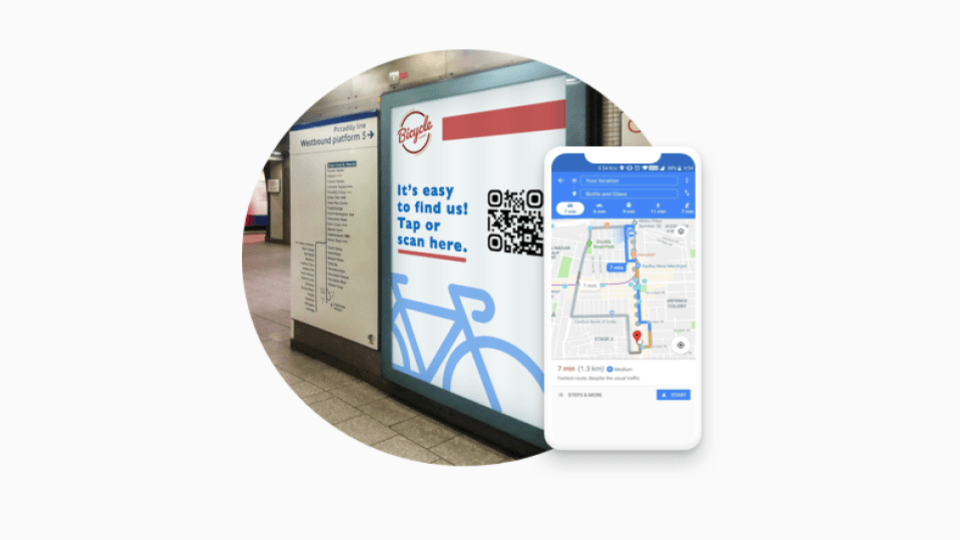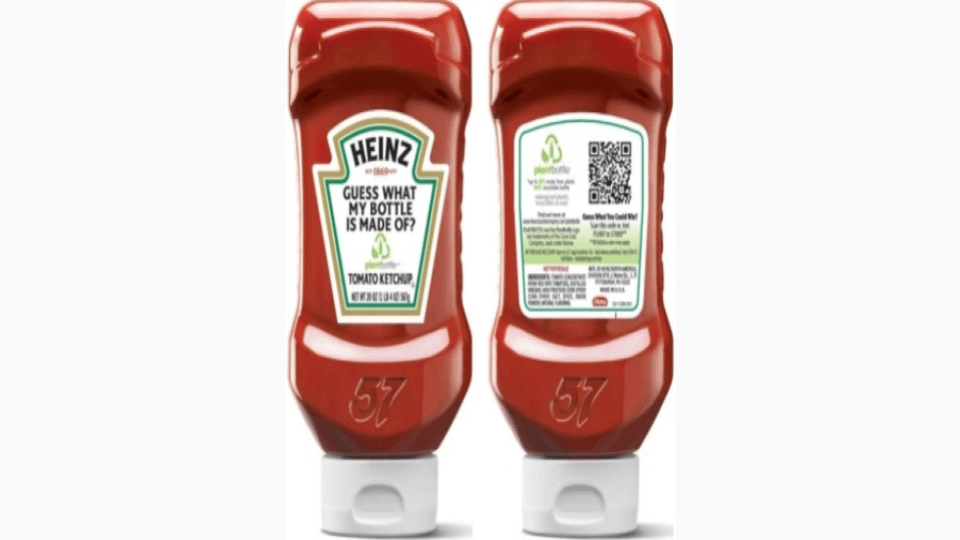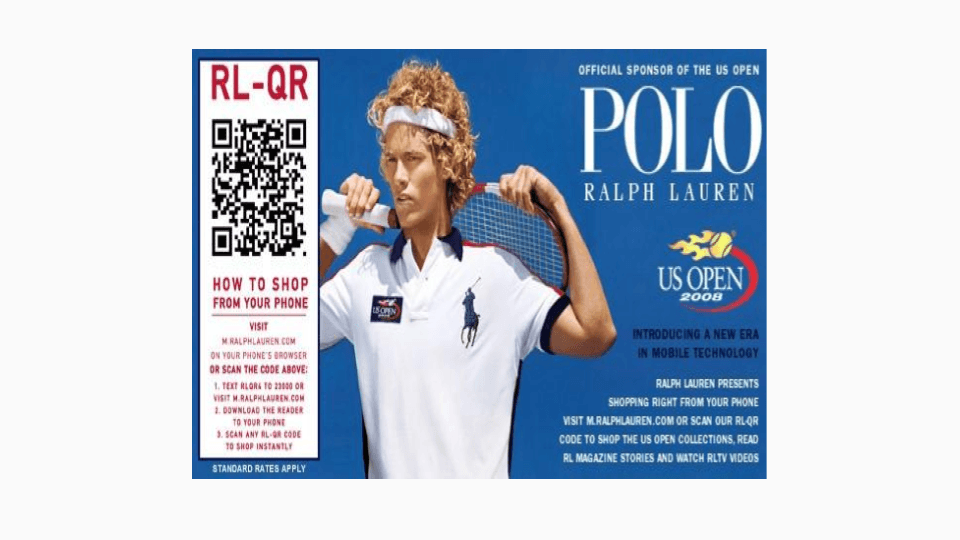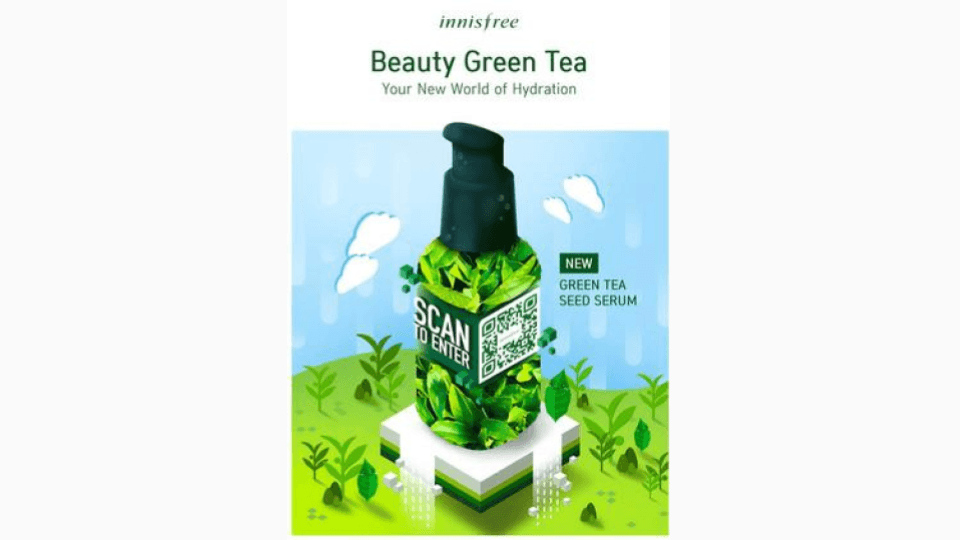After years of being raved about by marketers, QR Codes have finally started gaining momentum. Given that the number of US households with users who scanned QR Codes on a smartphone in the year 2018 is estimated to be 9.8 million (Statista), it looks like the efforts of marketers all around the world have managed to uncover the real potential of QR Codes successfully.
Table of Contents
- How to use QR Codes in retail stores
- Brands using QR Codes successfully in retail stores
- Why retailers are flocking to QR Codes
- Who is scanning QR Codes?
- FAQs
How to use QR Codes in retail stores
QR Codes increase traffic to the website
QR Codes can be used to link to a website’s landing page when scanned. Retail marketers can use this technique to drive traffic to the business’ store page to make the purchase easier for customers. Businesses can easily achieve this by adding a ‘scan to learn more,’ call to action.
Here’s a guide to choosing the best QR Code Generator for retail.
Scan QR Codes to make a phone call or send an email
QR Codes can be used to help customers make quick phone calls to customer support services of the retailer. They can also be used to send preset text messages and emails that are drafted and ready to send with the recipient as well as the subject line already added. All the user has to do is hit the send button.
Scan a QR Code to reveal discount offers and coupons

Another appealing way of using QR Codes in the retail industry is to link your discount coupons and offers to the QR Code and combine it with an advertising slogan or tagline that compels customers to scan your QR Codes. For example, if you sell Lightroom presets, you can give customers a discount on their first purchase.
QR Codes for signing up to newsletters, product notifications, and feedback forms
QR Codes linked to sign-up forms are useful for retailers to gather customer emails and contact details. This type of lead generation can help a business keep its customers updated continuously. Customers, in particular, can be updated about the availability of products and new launches. While sending out update emails in bulk, follow good practices, such as personalizing them, making them more interactive, etc. Alternatively, retailers can link QR Codes to feedback forms that help in tracking and understanding customer behavior and patterns.
Related: Created a form using a third party application? You can link the form to a QR Code using Uniqode. For instance, here’s how to make a QR Code for Microsoft Forms.
Scan retail QR Code to view the store location on maps

Retailers can print QR Codes on display ads and help customers navigate to the nearest outlet through Google Maps. Alternatively, you can connect QR Codes to an indoor navigation map to help in navigating to a specific section within the store.
To print QR Codes in bulk, retailers can also make use of an API to automate the process of creating QR Codes and integrate it into their solution.
QR Codes for Increased Social Media Visibility
Increase your visibility on social media by linking your QR Codes to social media profiles. QR Codes driving users to social media is an excellent way to gain more likes, shares, and subscribers.
Bonus: Find out how a Twitter QR Code elevates engagement levels in your retail store
QR Codes on products to boost app downloads

Providing QR Codes on Product Packaging and linking them to the app download page is a simple yet effective technique of encouraging downloads.
Use QR Code Business Cards to share contact information
Another fascinating application of the QR Code is its usage as virtual business cards to share contact information. Rather than providing contact details on your offline display ads, a better way of sharing contact details is to link them with your QR Codes. It’s a tool that sales professionals in retail can leverage. QR Codes are more appealing and reduce the chances of taking down the contact details wrongly.
Looking to create a customized QR Code for your business?
QR Code retail examples: Brands using QR Codes successfully in retail stores
Wondering how QR Codes can find successful applications in retail stores across the globe despite the differences in ideologies and customer buying patterns? The key to creating a successful QR code marketing campaign is to personalize the strategy based on location. Here’s how the pioneer brands are doing it right for their respective regions-:
How American brands use QR codes in retail-
1. QR Codes on Product Packaging as used by Heinz
Since we have now reached 2021: the year of QR Codes, we can see QR Codes taking over every brand’s product packaging. The concept of product packaging in 2021 is no more just placing your product in a package box labeled with your brand name but much more than that. Embedding QR Codes on product packages make for a meaningful addition to your product when you use it to reveal product-specific offers and discount packages rather than just redirecting users to the product information page.

Heinz added QR Codes to their product packages when they introduced environment-friendly packaging. Scanning these QR Codes led customers to an online green trivia quiz.
2. Ralph Lauren leverages QR Codes on offline ads

In addition to the typical big-box retailers, even the niche popular luxury retail brands such as Ralph Lauren have been implementing QR codes in offline ads like posters on display windows and magazine ads for almost a decade now.
3. Use QR Codes for cashless payments just like Walmart!

Retail giants like Walmart and Target were among the first brick-and-mortar retailers to implement in-store QR Codes for facilitating quick cashless payment systems. These payment systems helped attract more millennials who liked the idea of being able to shop without having to carry cash around at all times.
How European brands use retail QR Codes-
4. Scan QR Codes in-store and get products delivered at your door-step with Decathlon’s ‘Scan & Go’ app

Ever since the inception of QR Codes, retailers have been trying to find new ways of implementing QR codes to improve customer engagement and in-store experience with proper delivery management. One such implementation is that of deploying QR Codes on receipts for the items purchased and price tags attached to products.
Decathlon used this idea of deploying QR codes on price tags when they introduced an app that helped customers skip waiting in long queues with its ‘Scan and Go’ feature. The app helped customers to scan QR codes on price tags and make payments directly from the app.
5. QR Codes used by Lacoste for improved customer experience

Lacoste is one such retail brand that realized the potential of QR Codes way back in 2012. The famous French retail brand added a personal touch to its regular print ads by combining it with custom QR codes. This initiative helped the retailer in creating a personalized mobile magazine that lets the users watch videos of lookbooks from the fall collection and also make a purchase from the clothing line with their ‘Scan to shop’ feature.

Lacoste also introduced the ‘Lacoste Championship’ as a way of increasing customer engagement within the retail store.
You might also like: How to increase engagement using a TikTok QR Code
How Asian brands use QR codes in retail-
6. QR Codes in Pop up Stores for promoting new launches – Innisfree

A recent use-case example of QR Codes in Pop up stores is when Innisfree used QR Codes in its Pop up stores in Malaysia to promote the newly launched product line of Green tea seed serum.
Why retailers are flocking to QR Codes
Cost-effective
QR Codes are not very heavy on the pocket to implement even for smaller retail stores. For smaller businesses, using QR Codes is a way of making it easier for customers to connect.
High Versatility
QR Codes are highly versatile and can be applied in various use-cases as we’ve already seen above but not limited to those. QR Codes have a variety of use-cases across all industries which have already been tried and proven successful.
See QR Code use-cases in proximity marketing
Ease of implementation
QR Codes get effortlessly deployed within your traditional marketing campaigns such as posters, billboards, or even magazine ads. Native QR Code scanning capabilities on the latest Android and iOS phones have also made it easier for customers to scan these QR Codes and access the offerings of these campaigns.
Measurable results
QR Codes also provide the capability to track the number of times they have been scanned thereby making it possible for businesses to track and measure the effectiveness of their QR Code campaigns.
Uniqode’s QR Code marketing solution provides advanced analytics to track and measure campaigns that would give your retail marketing strategies an edge over that of competitors.
Read this how to create a trackable QR Code and monitor scan data guide to learn more.
Crowd Appeal
Owing to the kind of innovations in QR Codes implementation that we have seen in the past few years, we now have dynamic QR Codes, QR Codes with logos, QR Code games, and so on, which are quite appealing to the millennials.
Stay ahead of the competition
Since QR Codes have been around for more than a decade now, there is already a considerable share of larger retailers that have successfully started the use of QR Code campaigns. This makes it even more crucial for the rest of the market to keep up with the technology trend to stay well with the market competition.
Most retailer marketers though are still using static QR Codes. But static QR Codes have limitations like not allowing you to change the URLs once they have been set. Platforms such as Uniqode provide a dynamic QR Code Generator with features like the ability to change URLs and reuse the same QR Codes.
Who is scanning QR Codes?
The number of smartphone users in 2019 is forecasted to be 2.5 billion. Now that the latest Android and iOS phones are providing an in-built feature to scan QR codes from within the camera app, it has become a hassle-free task for consumers with a smartphone.
Here’s how you can scan QR Codes without an app.
With the number of QR coupons redeemed via mobile expected to reach 5.3 million by 2022, now is the right time for retailers to implement QR codes in retail stores.
Frequently Asked Questions
1. How to use QR Codes to checkout in retail?
QR Codes in shops can be used for quick payments at the checkout counter. Several platforms such as Walmart, PayPal, and IKEA offer QR Code payments for quick checkouts.
To use QR Codes for checkout, simply scan the QR Code provided at the checkout counter. The total money gets deducted from the digital wallet attached to the user’s bank account.
2. What problems do QR Codes in retail solve?
QR Codes can be used for a handful of reasons in retail –
- Quick checkout to avoid standing in long queues
- Cost-effective method to collect feedback and review
- Learn more about any product’s manufacturing process and ingredients by placing QR Codes on the package
- QR Codes on store aisles to get in touch with store executives
- Track and analyze QR Codes to fine-tune any existing campaign or roll out a new one
- Send out offers based on the crowd and timing of the day
3. What is the use of QR Codes in retail?
QR Codes in retail can be used for –
- Cashless payments
- Product packaging
- Marketing campaigns
- Social media footfall
- Initiation of customer executive engagement
- Feedback and review
- Loyalty programs
4. Can I print a QR Code?
Yes, QR Codes can be printed in any of these formats – PNG, JPEG, EPS, or SVG.
5. Why is my QR Code not working?
A QR Code may not be working due to the following reasons –
- Check the size and quality of the print of QR Code.
- Test the QR Code to review the error correction level.
- See if the QR Code has a poor contrast ratio.
- Scan the QR Code from a distance. Do not tilt the smartphone before scanning.
- Examine if the QR Code is inverted.
- Check the placement of the QR Code on the printed material.
6. Are QR Codes still relevant in 2021?
Yes, QR Codes are still relevant in 2021. Most smartphones come with an in-built QR Code scanner, eliminating the need to download third-party apps to scan a QR Code. This means that most industry verticals have now jumped to QR Code technology for marketing purposes, product packaging, sharing contact information, contactless payment, and other use-cases.
Need help with QR Code campaigns for your retail store? Uniqode’s QR Code marketing platform provides you an end-to-end solution to all your proximity marketing needs.











[…] QR codes at checkout can be used to offer additional discounts for customers. […]